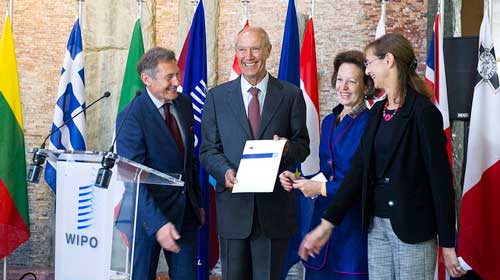WIPO Welcomes Two New Member States
September 19, 2017WIPO's membership grew to 191 following the recent deposit of instruments of accession with the Director General to the Convention establishing the World Intellectual Property Organization by two countries.

The Marshall Islands deposited its instrument of accession on September 11, 2017, making it the 190th member of WIPO. On September 12, 2017, Ambassador Marciano Octavio Garcia Da Silva, Permanent Representative of Timor-Leste to the United Nations and other International Organizations in Geneva, deposited his country’s instrument of accession with WIPO Director General Francis Gurry.
The WIPO Convention enters into force for these two countries three months after the deposit of the instruments of accession with the Director General – on December 11, 2017 for the Marshall Islands and on December 12, 2017 for Timor-Leste.
Background
The WIPO Convention is the constituent instrument of the World Intellectual Property Organization. It was signed at Stockholm on July 14, 1967 and entered into force in 1970. The origins of WIPO go back to 1883 and 1886 when the Paris Convention for the Protection of Industrial Property and the Berne Convention for the Protection of Literary and Artistic Works provided for the establishment of an "International Bureau". The two bureaus were united in 1893 and in 1970 were replaced by the World Intellectual Property Organization, by virtue of the WIPO Convention.
Related links

WIPO member states
WIPO’s member states determine the direction, budget and activities of the Organization through the decision-making bodies.

WIPO observers
Some 250 non-governmental organizations and intergovernmental organizations have official observer status at WIPO meetings.

WIPO treaties
We administer 26 treaties at the international level, touching on a wide range of IP-related subjects. These treaties are the bedrock of the IP system.